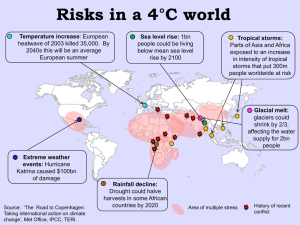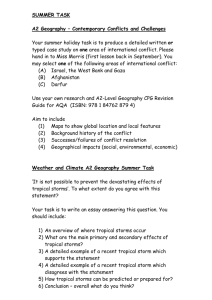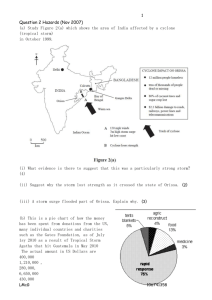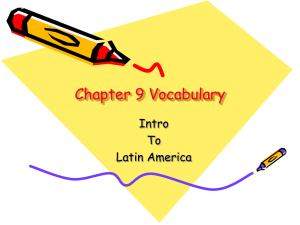Tropical Storms GAP FILL
advertisement
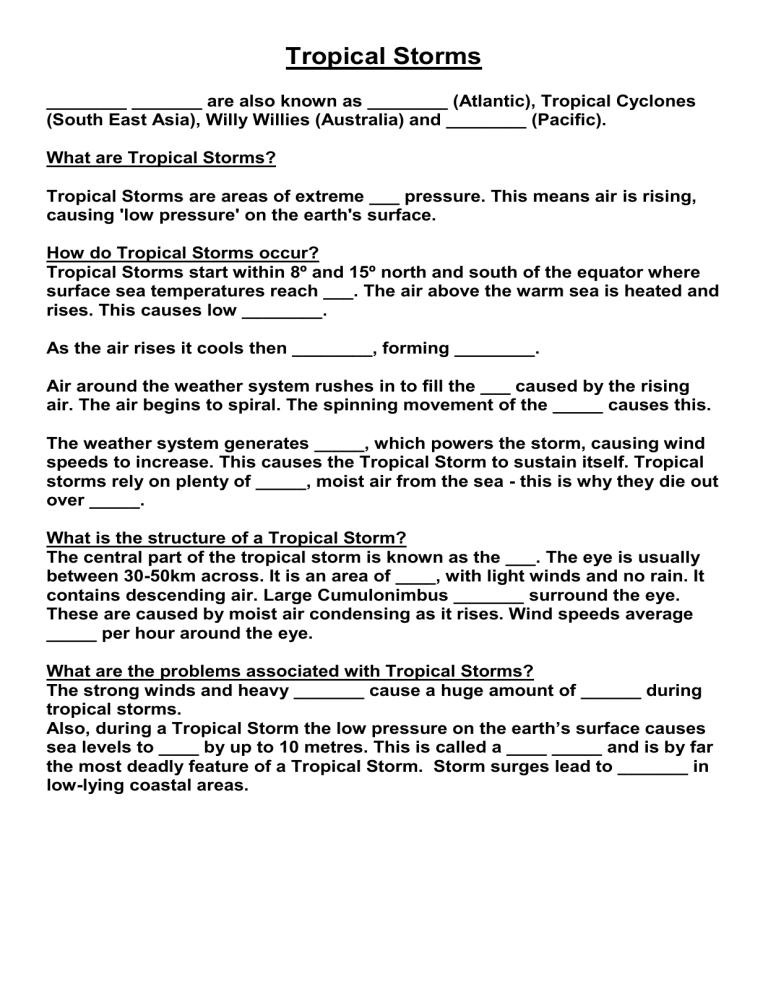
Tropical Storms ________ _______ are also known as ________ (Atlantic), Tropical Cyclones (South East Asia), Willy Willies (Australia) and ________ (Pacific). What are Tropical Storms? Tropical Storms are areas of extreme ___ pressure. This means air is rising, causing 'low pressure' on the earth's surface. How do Tropical Storms occur? Tropical Storms start within 8º and 15º north and south of the equator where surface sea temperatures reach ___. The air above the warm sea is heated and rises. This causes low ________. As the air rises it cools then ________, forming ________. Air around the weather system rushes in to fill the ___ caused by the rising air. The air begins to spiral. The spinning movement of the _____ causes this. The weather system generates _____, which powers the storm, causing wind speeds to increase. This causes the Tropical Storm to sustain itself. Tropical storms rely on plenty of _____, moist air from the sea - this is why they die out over _____. What is the structure of a Tropical Storm? The central part of the tropical storm is known as the ___. The eye is usually between 30-50km across. It is an area of ____, with light winds and no rain. It contains descending air. Large Cumulonimbus _______ surround the eye. These are caused by moist air condensing as it rises. Wind speeds average _____ per hour around the eye. What are the problems associated with Tropical Storms? The strong winds and heavy _______ cause a huge amount of ______ during tropical storms. Also, during a Tropical Storm the low pressure on the earth’s surface causes sea levels to ____ by up to 10 metres. This is called a ____ _____ and is by far the most deadly feature of a Tropical Storm. Storm surges lead to _______ in low-lying coastal areas.
